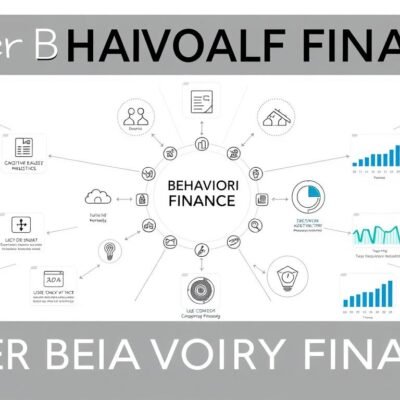Every year, fraudsters find new ways to exploit payment systems – but now, artificial intelligence (AI) is stepping up as a powerful ally in the fight against fraud. Machine learning algorithms can sift through mountains of transaction data to spot patterns and anomalies far faster (and more accurately) than traditional methods.
To understand this revolution in fraud prevention, we turn to Jed Morley, CEO of Platinum Payment Systems, who has been integrating AI into payments to enhance security.
Morley asserts that AI is already “revolutionizing payment processing by automating fraud detection, enhancing transaction speed, and personalizing customer experiences.”
In this article, we’ll explore:
-
The limitations of legacy fraud prevention and how AI overcomes them
-
Real-world examples of AI catching fraud that humans miss (and vice versa)
-
The dual benefit of AI: stopping fraud while reducing false declines
-
Best practices for businesses to implement AI-driven security tools
-
Balancing privacy and AI – ensuring customer data is protected even as algorithms analyze it
By the end, you’ll see why Jed Morley is so bullish on AI as a cornerstone of payment security, and how you can harness its capabilities to safeguard your business and customers.
The Fraud Problem: Too Much Data, Too Little Time
Payment fraud comes in many forms – stolen credit card usage, identity theft, account takeovers, friendly fraud (chargeback abuse by customers), and more. Traditional fraud prevention has relied on rules-based systems (e.g., block a transaction if it’s over $1,000 and the billing and shipping countries differ).
While rules are useful, they are rigid and can be bypassed by sophisticated fraudsters. Plus, fraud patterns constantly evolve (consider the shift from in-person card fraud to online fraud after EMV chip adoption).
Jed Morley highlights that AI, particularly machine learning, is a game-changer because it can adapt and learn. “AI-driven systems will play a crucial role in real-time analytics, reducing false declines, and improving risk assessment,” he says.
Let’s break down why AI is better equipped:
Scale: AI can analyze thousands of data points per transaction in milliseconds – far more than a human or a static rule system. It computes risk scores using device fingerprinting, geolocation, behavioral biometrics, transaction history, and more.
Pattern Recognition: Fraudsters often work in patterns (e.g., testing stolen cards with small purchases). Machine learning models can identify these evolving tactics across millions of transactions.
Adaptive Learning: AI models can retrain as new fraud trends emerge. A traditional ruleset might miss these until manually updated – by which time damage is done.
Reducing Noise: Old systems produce many false positives. AI can better differentiate between real and fraudulent transactions. Morley emphasizes this as a key benefit – “approving more legitimate transactions while blocking bad ones.”
Example: A PlatPay AI system sees a sudden purchase in London on a card usually used in Utah. AI checks if the cardholder recently bought plane tickets or has travel history. If not, it flags the charge. If yes, it approves. That’s nuance a rules engine can’t match.
Real-World Wins: Stopping Fraud with AI
Jed Morley has integrated AI into PlatPay’s fraud stack, and shared some key results:
False Decline Reduction: A merchant saw a high decline rate due to outdated filters. After switching to AI-based fraud screening, approval rates improved significantly – bringing back thousands in lost revenue per month.
Chargeback Mitigation: For a subscription service hit by friendly fraud, AI flagged risky orders by identifying high-chargeback patterns (e.g., certain zip codes or SKUs). This reduced disputes before they occurred.
Speed and Scale: During the 2021 holiday ecommerce surge, AI systems at PlatPay handled doubled volumes without lag. Legacy systems might have required manual rule adjustments to keep up.
Morley adds that dynamic friction is another AI benefit: if the system is confident you’re the real buyer, no extra steps are needed. If there’s doubt, it may request verification. This keeps the experience smooth for real users.
AI also approves more good transactions that might otherwise look suspicious. For example, a customer buying an expensive item for the first time might get flagged. But if AI recognizes their device and patterns as trusted, the transaction goes through.
Still, Morley emphasizes that AI isn’t magic: “Understanding your market and customers will remain a key differentiator.” You need quality data, context-aware models, and human review of edge cases. AI + expert oversight is the winning combo.
Implementing AI Fraud Tools: Best Practices
Jed Morley’s practical advice for using AI in fraud prevention includes:
Leverage Proven Solutions: No need to build from scratch. Use processors or tools with built-in AI fraud engines. PlatPay, for instance, includes this for clients.
Insist on Real-Time Decisioning: Fraud tools must operate in milliseconds – not hours. Look for systems that protect transactions before approval.
Customize by Business Type: Fraud in a fashion store differs from fraud in digital SaaS. Ensure your AI provider can tune models for your industry.
Monitor and Adjust: AI needs feedback. Review fraud reports, flag missed or false positives, and retrain the model regularly. Watch for seasonal shifts or product launches that change patterns.
Layer with Traditional Tools: Combine AI with AVS, CVV, device fingerprinting, etc. Morley likely supports a multi-layered approach where AI ingests all these signals for better accuracy.
Respect Customer Privacy: Use only the data you need. Follow GDPR and similar privacy laws. Be transparent about how you use customer data for fraud checks.
Note: Morley also highlights AI’s use in compliance. Machine learning can flag suspicious or money laundering activity that’s hard to detect manually. For regulated businesses, AI can assist with KYC or AML obligations.
Maintaining Trust: Communicating Security to Customers
Most customers never notice when AI prevents fraud – but they do notice if something gets blocked or feels invasive. Jed Morley’s view is that smooth, secure experiences build customer confidence, which drives loyalty.
You don’t need to reveal fraud strategies, but do reassure customers:
Publish a security page or FAQ outlining how payments are protected
Display PCI or trust badges if available
Respond empathetically when a legit customer is flagged, and explain why
Morley’s quote — “understanding your market and customers will remain key” — reminds us that not all customer groups are alike. Older customers might need more support during security checks. Younger, privacy-focused buyers may want assurance that AI isn’t overstepping.
Bonus Insight: AI may also assist in customer service. For example, if a buyer asks, “Why was I declined?”, an AI-powered system could offer a clear answer (“This order was flagged due to address mismatch – please verify and try again”).
Conclusion
AI-driven fraud prevention is no longer optional – it’s essential. Cybercriminals are getting smarter, and businesses must adapt. Jed Morley’s experiences prove that the payoff is real: fewer chargebacks, better approval rates, and safer customer experiences.
The key is to implement AI thoughtfully, keep humans in the loop, and aim for the balance between security and convenience.
As Morley might say:
The best fraud prevention is invisible to the customer, but invaluable to the business – and AI is making that possible.
About PlatPay
Platinum Payment Systems (PlatPay) is a fintech leader specializing in secure payment processing. Embracing AI-driven fraud prevention, PlatPay helps businesses drastically reduce fraud and chargebacks while minimizing false declines. Under CEO Jed Morley’s leadership, PlatPay employs advanced machine learning models and multi-layered security to protect transactions in real-time. Clients benefit from higher approval rates, adaptive risk management, and expert support in keeping payments safe. Secure your revenue and reputation with PlatPay’s AI-powered solutions – visit platpay.com/jed-morley.
About PlatPay: PlatPay lets brands track, reduce, and offset payment-related CO₂ in real time. Discover Jed Morley’s ESG philosophy in his ValiantCEO profile.
Kenneth Socha
As an accomplished writer with a degree in Business Administration, I have had the privilege of complementing my extensive experience in the fields of business and finance. My strong foundation in business principles and practices allows me to offer expertise across various categories, including business news, investment strategies, startups, financial management, taxation, and compliance.









